How To Actively Manage Your House’s Temperature
Author: Kirsten Bradley
Go to Source
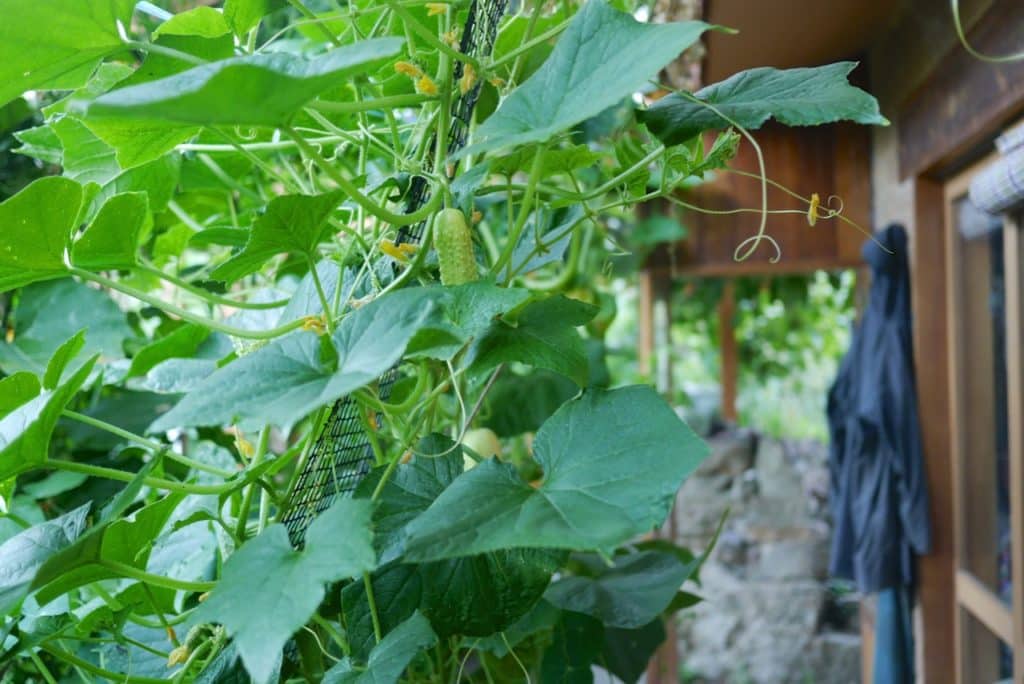
Here’s an everyday climate action for you that’s super easy, with big effects for both your health and for your carbon footprint, too. Learn to actively manage your house’s temperature – in small but significant ways.
You will find that this Permaculture Living 2020 action is not just about heating and cooling – it’s also about living a little more. And observing and interacting with where you live. So all the good things, really – disguised as an energy-saving exercise!
So. We all like to keep warm in winter and cool in summer, of course. But all that gas or electricity heating and cooling can be your household’s single biggest contributor to CO2, and also a major household expense.
The good news is you can make a HUGE difference by making simple, small behavioural changes – or adjustments- to your home and environment.
To take on this challenge, you’ll actively manage your house’s temperature when possible, and turn off the air conditioning and heating whenever you can.
And by doing this, you’ll reduce your household carbon footprint dramatically – and also save big on your power bills.
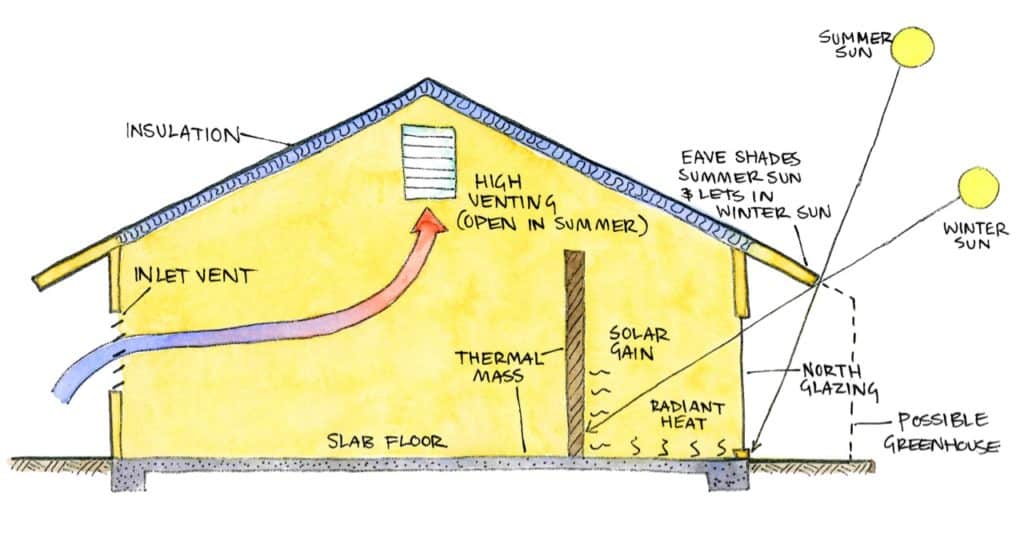
Firstly: ask some questions and do some research:
Think about the following questions, and then make a plan to act on your answers.
How can I use natural sources of heating and cooling – the sun for winter warmth, and breezes and shading for summer cool?
The answer to this question will depend on where you live – so do some brainstorming, and dive into the resources at the end of this post if you need inspiration.
No matter where you live, there IS multiple and simple things that you can do to better regulate your household’s temperature, regardless of where you are.

How can I change my behaviour so that it better fits the climate in which I live?
Aha. Now we’re really getting to the meat of it.
Like so many actions and habits that we can take up to lessen our impact on our climate (and often boost our health and happiness as a side effect)… it’s as much about your own behaviour, and rethinking that, as anything else.
So. Here’s a few examples. Write down what sort of things you could do at your place –
- Use rooms when they are the most comfortable: one might be great as an office in winter when it’s warm and bright, but become a spare room in summer when the afternoon sun makes it unbearably hot.
- Close windows, curtains and external shutters early on every hot day.
- Open the right windows in the evening, to let cooler air come through.
- Use fans, which are much more efficient than air conditioners.
- Cook outside regularly in summer. Check out pocket rocket stoves for a DIY solution, or there’s a billion off-the-shelf mini wood stoves available, if you don’t have space for a larger setup.
- Work in the garden, or go for a walk or run, in the morning on cold days to warm you up.
- Layer your clothing, have a thermos of tea at the ready and keep a hot water bottle on your lap or under your feet – always do these things first, before you decide extra heating is needed.
- Get up every half hour or so to bust some moves to a Prince song.
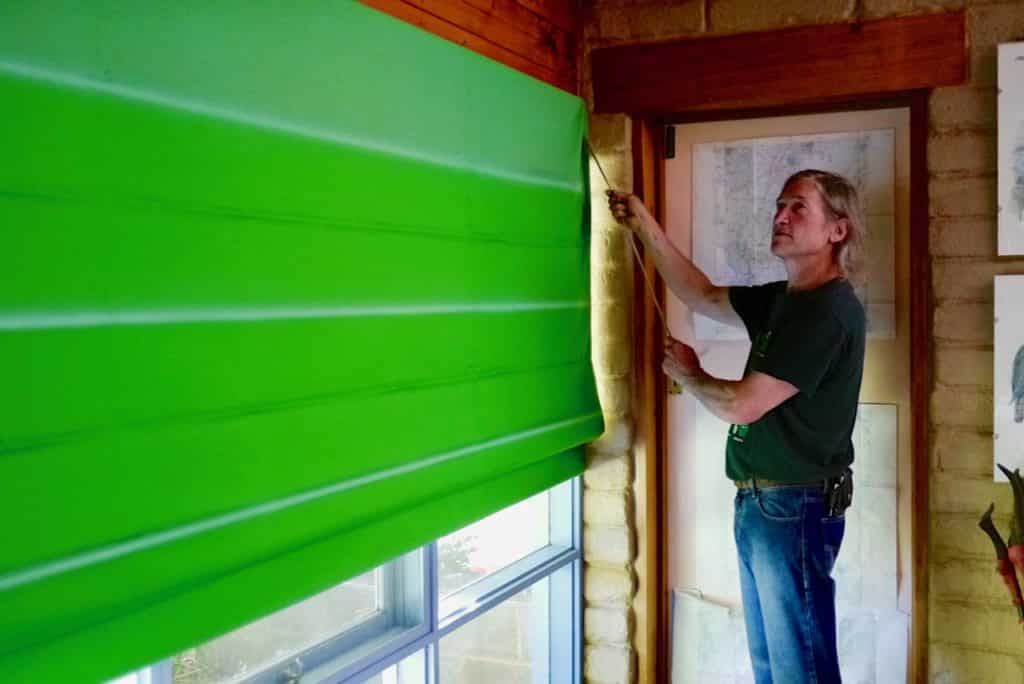
How can I adapt my environment?
Once you’re sorted out what behavioural and passive changes you can make to aid your heating and cooling, it’s time to get structural. Some examples…
- Seal gaps to prevent winter heat loss. Get a door snake, seal drafts however you can – you can find gaps with an incense stick, see resources below.,
- Windows are usually where you lose most of your heat, so… Curtains! Blockout or heavy curtains work substantially better to insulate your house than thin material blinds, or wood or metal venetians. Pelmets also make a big difference to heat loss.
- Rugs! If your floor is thin and uninsulated, rugs can make a huge difference to both your cosiness and your room’s heat- retaining abilities. Even if there’s already carpet down.
- Furniture – make sure none of it is blocking the airflow for both cool summer breezes and for your winter warmth. Moving lounges around so that a heater warms more of the room directly can make a huge difference to your general warmth and happiness.
- If you own your home, research good insulation (cellulose insulation is one of the lower impact options).
- Check out wood stoves for heating your home, food and water, all at once. If powered by local sustainable timber, this can be an awesome solution for some.
- Consider a passive solar greenhouse of some kind (DIY or built) on the equator-facing side of your house, to add to winter warming potential.
- Consider double glazing for your windows, which will insulate your house markedly. Yes it is an investment, but hey – so is each power bill, and also, so are your emissions.
- Grow plants directly outside west-facing windows to screen them, and to increase humidity inside.
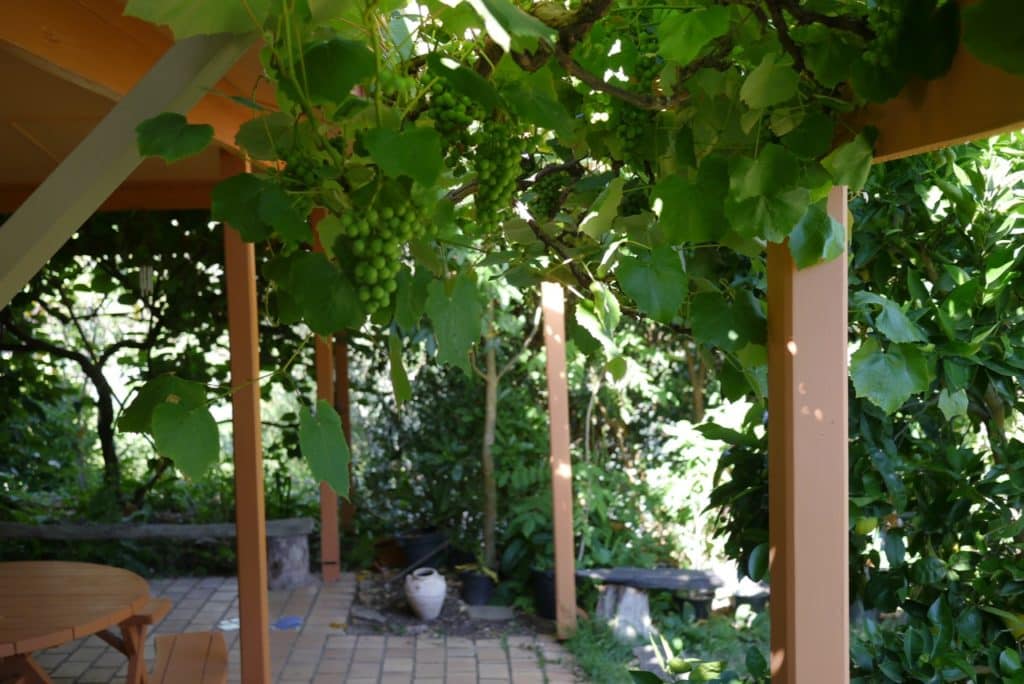
As always, how you approach this challenge will entirely depend on where you live, and how much control you have over your house.
But there is definitely heaps that you can do to actively managing your house’s temperature, no matter where you live. Get to it peoples!
And let us know how you go in the comments below, or what you’re already doing or planning? We’d love to hear 🙂
This everyday climate action is part of our Permaculture Living 2020 series – this year we’re sharing one action a week that you can get started with right now, to make meaningful changes, both big and small, with do-able actions and habits. Make sure you’re on our newsletter so you get notified of all the goodness.
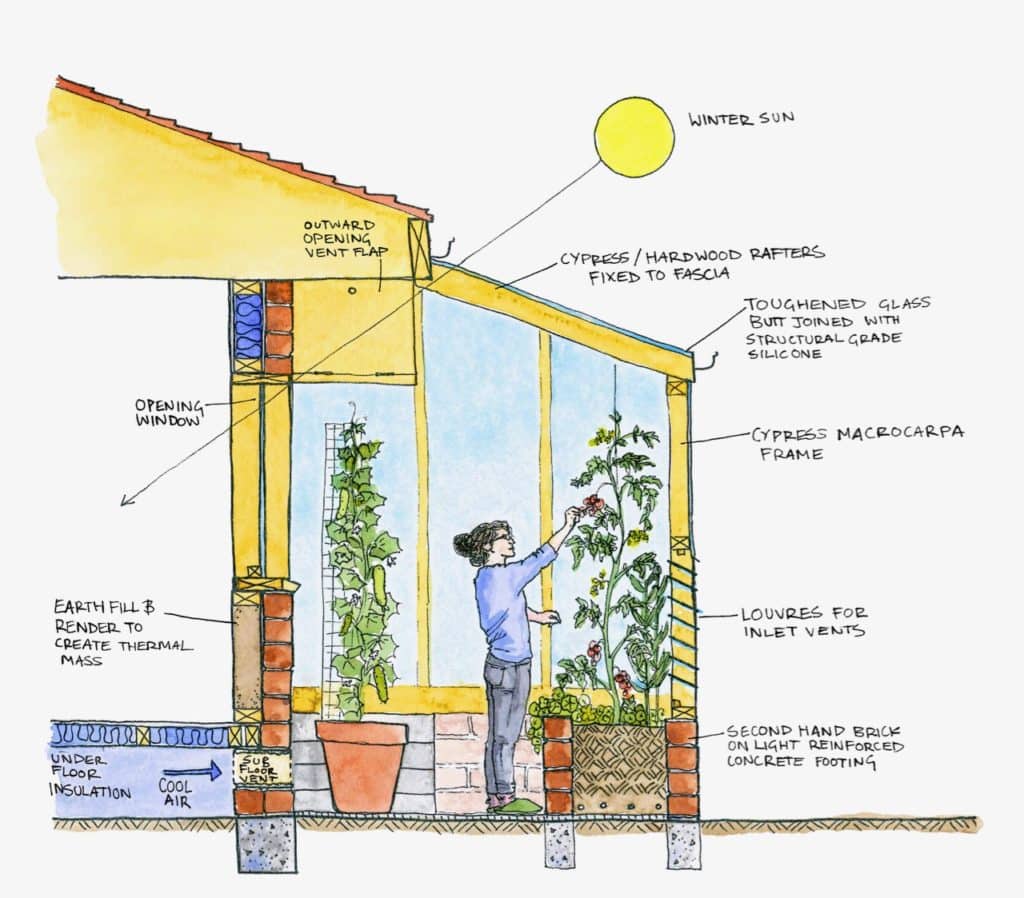
Some resources to get you going…
- Natural Building: Passive House, Active People – passive solar houses and active people.
- How to map the sun on your site – great staring point for figuring out your potential solar gain.
- RetroSuburbia by David Holmgren – stacks of great passive/active house temp design ideas in here.
- Warm Your Home Efficiently 52 Climate Actions – draft-proofing, windbreaks, insulation, windows, heating and more.
- Sustainable House by Michael Mobbs (CHOICE Books, 2010) – sustainable house in the centre of Sydney.
- Passive Design – Your Home Australian Government – elements of passive design – heaps of resources here.
- How to Save Money and Energy Heating Your Rental Apartment – NY times.
The above material is an snippet from our Permaculture Living online course – a 12 week, interactive, in-depth program that will take you from ‘hmm, that sounds like a good idea’ to a version of yourself who is FULL of new projects, habits and knowledge – and motivated to start making life better. You can join the waitlist for the next class here.
The post How To Actively Manage Your House’s Temperature appeared first on Milkwood: permaculture courses, skills + stories.
